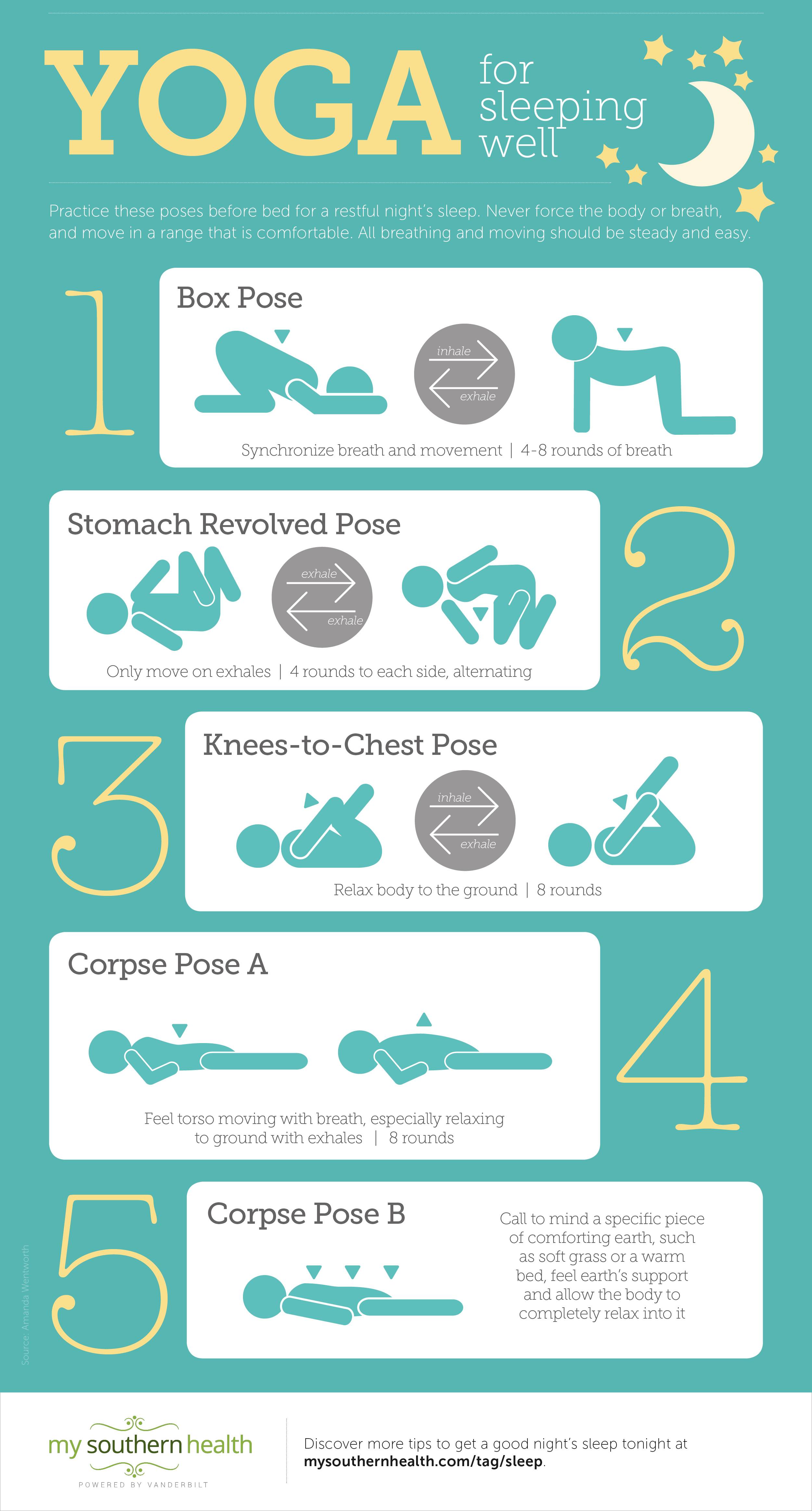
Many people suffering from migraines are happy to report that yoga has been successful in treating their condition. Clinical trials have shown that yoga can reduce the intensity and frequency of migraines. The exercise not only reduced stress but also helped patients to improve their cardiac autonomic balance, and decrease the sympathetic drive. These results have been replicated in a number of studies. You can read more about yoga's effectiveness as a migraine treatment here.
Legs Up the Wall, one of the most commonly used poses to treat migraines, is the best. Legs up the wall is a pose where the legs are raised toward the ceiling. This allows blood flow to the brain in the opposite way to downward dog. You must lie flat on your stomach, your knees facing upwards. Your arms should be at your sides. Your head should be pressed into the mat. Keep your chin from touching your chest. This is a great way to reduce pain and lengthen the spine.

Bridge Pose, a popular yoga pose that is great for migraine sufferers, is also a very popular one. It helps release tension in the upper back and increases blood flow. The bridge pose requires you to lie on your stomach with your knees raised. You can try holding the bridge position for at least 15 minutes. It may help to increase the time spent in this position. You will soon enjoy a higher quality of your life. Consider incorporating these practices into your daily schedule if you are suffering from migraines.
Child's pose relieves tension in the upper body and increases blood flow to the head. Bridge pose is very beneficial as it increases blood flow to your head. The best way to do this is on your back with your eyes closed. Your knees should be slightly bent to reach your feet and help relax your upper body. This pose can be practiced several times daily to prevent migraines.
It is an excellent way to find a yoga headache relief. It can help relieve pain and boost your cardiovascular system. The downward dog is a wonderful way to relieve a painful headache. It activates the pressure points in the head and neck. This is an excellent way to fight migraines. You can try it as a bedside yoga exercise for migraines. If you aren't comfortable lying down on the floor, you can do the pose in a chair.

Yoga can be used to treat migraines. It's also effective as an adjuvant to modern therapy. Research suggests that yoga can improve overall health. According to the study authors, it should be used in addition to modern medications. Surprised to learn that yoga is good for migraine sufferers! You may even be able stop migraines from happening altogether.
FAQ
What is your favorite workout to build muscle mass?
There are two main things you must do when building muscle mass. These are the isolation exercises as well as compound movements. Isolation exercises target particular muscles, while compound movements focus more on several groups at once.
Choose exercises that test all your major muscle groups to improve your workouts. This ensures that you are always working hard during each session.
To keep track of what you have done, use an app called MyFitnessPal. It can track everything from calories burnt to weight lifting. You can also create custom meal plans based on your goals.
How many calories should I eat daily?
It varies from one person to another. On average, you need 2000 to 2500 calories per days. Based on your age, gender, height and activity level, you will need to calculate how many calories you require.
How To Build Muscles Fast?
The best way to quickly build muscle is to eat healthy and exercise regularly.
Early morning is the best time to exercise. You are awake and alert, ready to take on the day.
Try exercises like squats and bench presses.
Consider trying different weight training programs and drinking plenty of water throughout each day.
Is Cardio Better Than Strength Training?
Both are equally beneficial. Cardio is better if you are looking to build muscle faster.
Cardio burns more calories per hour than strength training, and also burns more fat.
Although strength training can increase muscle mass, it is more difficult than cardio to do so.
Is it true?
Protein helps maintain healthy bones and tissue. Too much protein can cause calcium to be excreted through the urine. In turn, this can result in kidney stones.
It is important that you note that not all people develop kidney stones when they consume more than 2 grams of protein per kg (2.2 pounds). It is possible to eat high levels of protein without developing kidney stones.
By watching how much sodium you consume, kidney stones can be prevented. Sodium regulates the water balance of the kidneys. A high level of sodium can increase the risk of developing kidney stone.
If you have kidney stone, you might also consider reducing your protein intake. Protein provides about half of the daily caloric needs for most adults. It is possible to lose weight by cutting down on your intake of proteins.
If you do decide to eat more protein, don't go overboard. You should aim to consume less than 20% of your total calories from protein.
Statistics
- According to the American Academy of Dermatology (AAD), men over 50 are at a heightened risk of developing it. (healthline.com)
- By John Thompson Take a whopping 38% off a set of PowerBlock Pros. (menshealth.com)
- The PRS enabled risk stratification for overall prostate cancer and lethal disease with a four-fold difference between men in the highest and lowest quartiles (HR, 4.32; 95% confidence interval [CI], 3.16-5.89). (pubmed.ncbi.nlm.nih.gov)
- Cardmembers earn 5% Back at Amazon.com with a Prime Credit Card. (amazon.com)
- Get free shipping and 25% off today. (healthline.com)
External Links
How To
What nutrients is a man supposed to consume daily?
Men require daily nutrition for healthy growth and development. The body needs vitamins, minerals as well as proteins, carbohydrates and fats.
Specific nutrients are also required by the male body at different times during the day. For example, when you sleep, your body uses energy from food to make hormones, antibodies, and enzymes. Protein is needed to build muscles and repair tissue damaged when you wake up.
Your body will burn fat at night and store the extra energy as a form of glycogen. Your body still requires sufficient nutrients and calories even though it needs less calories. You might have an occasional snack during the night if your stomach is feeling hungry.
When you work out, you need adequate levels of carbs and protein to fuel your muscles. If you train hard, you may experience muscle soreness after exercising.
To avoid this, you need to eat carbs and proteins within two hours of training. Your body will break down stored glycogen to provide glucose for energy.
Also, protein must be consumed immediately after your workouts. This prevents muscle tissue being destroyed while you're sleeping.
Your body makes lactic acid when you are doing intense physical activities. The body produces lactic acid when there is too much activity. This can cause fatigue. Eat foods high in carbohydrate, such as fruits, vegetables, to avoid this.
Carbohydrates provide energy for your body to recover after strenuous exercise.
Your diet may include lean meats like fish, eggs, milk cheese, yogurt or beans as well as lean proteins such as fish, eggs, egg yolks, cheese, yogurt, bean, peanuts and seeds.
All these foods are high-quality sources of protein. Protein helps to repair and grow muscles. Protein also supplies the amino acids your body requires to make sex hormones, such as testosterone.
Good skin, hair, and joint health requires adequate dietary fats. Healthy men need between 20% - 35% of the total caloric intake to be fat.
Fat is good for your heart and helps you fight cancer. It helps keep your brain working properly.
Vegetable oils such as sunflower oil and soybean oil can provide most of your fat needs.
These oils are rich in monounsaturated essential fatty acids (MUFAs). MUFAs help lower cholesterol and reduce inflammation. They protect your cells against free radical damage.
Saturated fats (SFAs), are found mainly in animal products such as meat, milk products, and butter. SFAs can raise LDL ("bad") cholesterol levels and increase triglycerides. They are also good for weight loss and belly fat.
Plant-based oils such as vegetable oil, nuts, seeds, or grains are rich in polyunsaturated fats (PUFAs). PUFAs improve cardiovascular function and decrease inflammation. They are also good for controlling blood sugar and cholesterol.
Erectile dysfunction can often be a problem for men who have low HDL ("good") levels of cholesterol. A high intake of saturated fats leads to higher levels of bad cholesterol.
Men who eat large quantities of red meats or pork may develop prostate problems. Nitrites convert to nitrosamines when cooked at high temperatures. These compounds cause cancer.
Most processed meats contain nitrites and other harmful chemicals. These chemicals should be avoided.
The American Heart Association recommends that you limit your intake of red meat to 2 per week. Instead, choose poultry and fish, legumes, tofu or whole grain bread as your main source of protein.